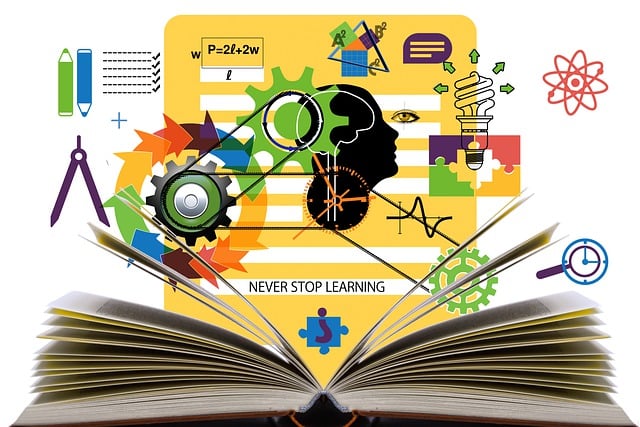Feynman Technique
The Feynman Technique, named after physicist Richard Feynman, is a compelling methodology for viable learning. It works by clearing up a convoluted mind for an individual else and improving cognizance and mastery maintenance. Feynman, called “The Unique Explainer,” became famous for his ability to work of art on confounded considerations and gift them such that everyone needed to secure.
The Feynman Method might be applied to different subjects, not just math or mechanical skills. For instance, it could be used in history, language, or web development. The Bayes’ Standard and the CSS Box Model are examples of the Feynman Technique. By using the Feynman Technique, people can become outstanding, powerful scholars and experts in complex questions without trouble.
The Great Explainer: Richard Feynman
Richard Feynman, an eminent physicist who got the Nobel Prize in 1965 for his compositions on quantum electrodynamics, has become a top-notch researcher and a marvelous educator. Known as “The Incomparable Explainer,” Feynman had the one-of-a-kind capacity to work on complex thoughts and present them in a way that anybody could secure. He trusted the strength of instructing and making sense of to develop mastery of a subject. Feynman’s assurance of disentangling the complexities of an idea until it has become instinctively conceivable is the dream at the heart of the Feynman Procedure.
Table of Contents
The Feynman Technique consists of four steps.
The Feynman Method, a four-step process, aims to enhance comprehension and information maintenance. We should jump into each step:
Step 1: Write the name of the technique.
To start, take a piece of paper and record the name of your methodology. For example, permit the utilization of the Pythagorean Hypothesis as an occurrence for these means.
Step 2: Explain the Concept in Simple Language
In this subsequent step, you will probably make sense of the idea in unquestionable, easy-to-perceive language. Avoid relying on specialized states or tangled intentions. Imagine you’re showing the concept to an individual without a past skill of worry. Use models and reasonable projects to cement your insight. Thus, you may not best support your aptitude anyway, and you may not see any holes or locales that require further review.
Step 3: Identify and address areas of shaky understanding.
After making sense of the thought:
- Pause for a minute to reflect on your explanation.
- Recognize any districts where your comprehension can be insecure or where you battled all through the clarification. This self-reflection will assist you with pinpointing the regions that require extra notice or defense.
- To reinforce your skill in these subareas, return to the stock material, assess your notes, or create artistic creations through more prominent guides.
Step 4: Simplify and Clarify Your Explanation
The last step is to look at your clarification and become mindful of locales where you depended on specialized expressions or confounded language. Challenge yourself to separate and clarify those terms in improved, smooth-to-catch phrases. The key here is straightforwardness. Imagine you’re clearing up the idea for a youngster who asks, “Why does that creation exist?” This viewpoint will help you entrust your doubts and broaden your knowledge into the thought.


The Benefits of the Feynman Technique
The Feynman Method offers a few advantages for viable learning:
• Rapidly outlining an idea and surveying your insight;
• Recognizing weak spots and zeroing in on a designated study;
• Testing your comprehension and testing presumptions;
• Working on your capacity to make sense of complicated ideas
• Improving maintenance and long-haul information
By following the Feynman Strategy, you can move toward the educational experience all the more productively and throw away less energy on superfluous surveys.
Applying the Feynman Technique
You can apply the Feynman Procedure to many subjects, not just math or science. Whether you understand history, language, or web improvement, making sense of thought for someone else can radically upgrade your expertise. Coaching or simulating coaching requires you to break down complicated thoughts into more straightforward phrases, revealing gaps in your understanding.
Examples of the Feynman Technique in Action
Assuming you’re curious about seeing the Feynman Method applied to additional confounded thoughts or subjects irrelevant to math, I’ve covered more than one model inside the assistant article for this video. One occasion investigates Bayes’ Standard, a thought in plausibility guidelines and data, simultaneously as the other dives into the CSS Box Model, a fundamental idea in net improvement. These models will showcase the adaptability of the Feynman Method to various perspectives.
Conclusion
The Feynman Strategy, named after physicist Richard Feynman, offers a successful method for examining and extending your mastery of an issue. By making sense of an idea, if you have been instructing it to someone else, you might enhance your cognizance and recognize districts that require further examination. Make sure to improve on your causes, mission, and suppositions, and incorporate the outlook of training an idea in an inquisitive kid. Through the Feynman Procedure, you can become a more prominent, powerful student and expert with confounded considerations without any problem.


Amjad Mustafa, the owner and author of Keen2Know, is a highly qualified individual with strong experience in technical engineering. He is an experienced professional with a variety of business, technology, and car knowledge. His academic background prepared him for a diverse career and established him as a prominent figure at the intersection of these rapidly evolving industries.




It’s amazing to go to see this site and reading the views of all
friends concerning this piece of writing, while I am also keen of getting
knowledge. https://www.waste-ndc.pro/community/profile/tressa79906983/